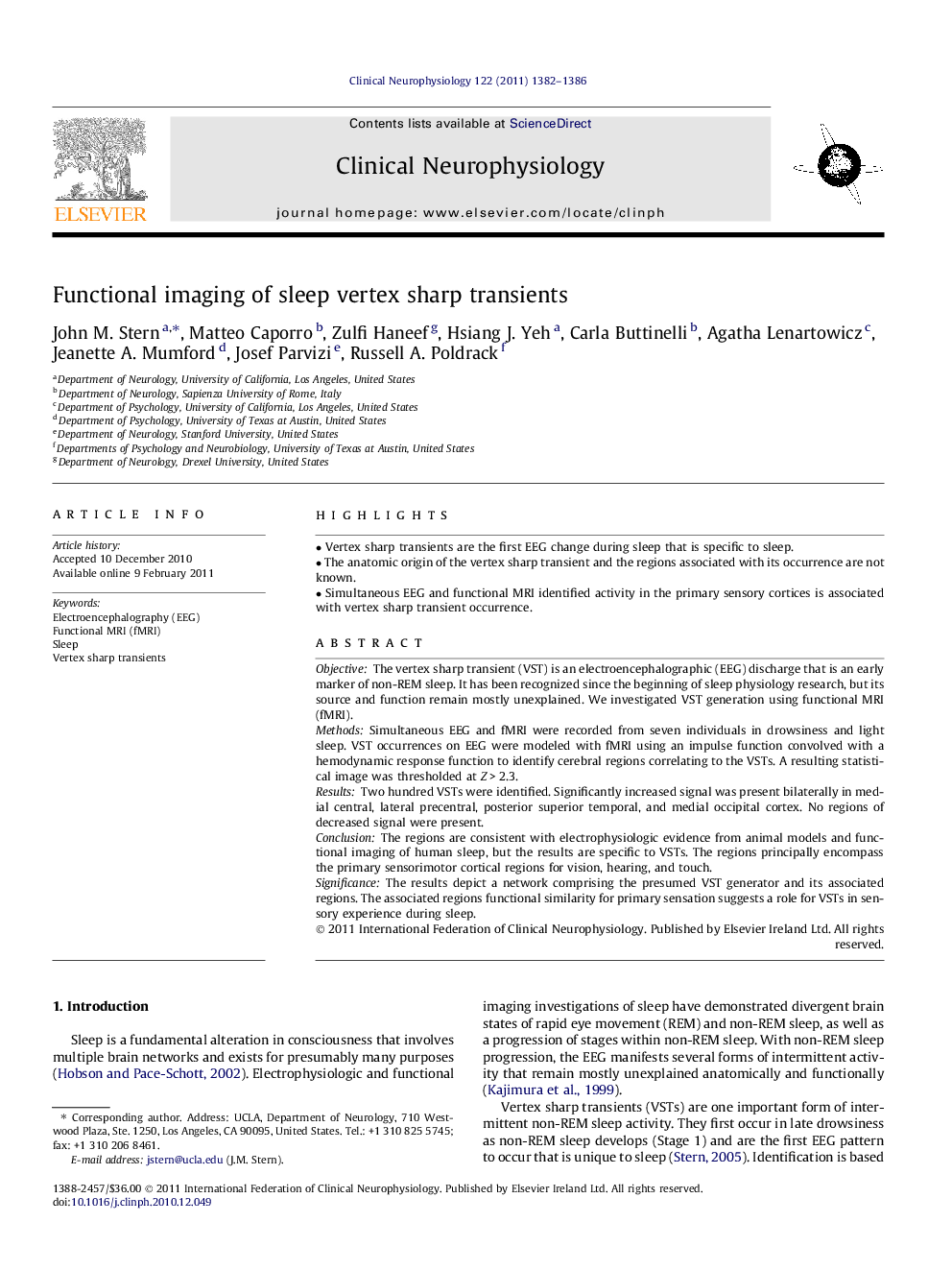| Article ID | Journal | Published Year | Pages | File Type |
|---|---|---|---|---|
| 3044782 | Clinical Neurophysiology | 2011 | 5 Pages |
ObjectiveThe vertex sharp transient (VST) is an electroencephalographic (EEG) discharge that is an early marker of non-REM sleep. It has been recognized since the beginning of sleep physiology research, but its source and function remain mostly unexplained. We investigated VST generation using functional MRI (fMRI).MethodsSimultaneous EEG and fMRI were recorded from seven individuals in drowsiness and light sleep. VST occurrences on EEG were modeled with fMRI using an impulse function convolved with a hemodynamic response function to identify cerebral regions correlating to the VSTs. A resulting statistical image was thresholded at Z > 2.3.ResultsTwo hundred VSTs were identified. Significantly increased signal was present bilaterally in medial central, lateral precentral, posterior superior temporal, and medial occipital cortex. No regions of decreased signal were present.ConclusionThe regions are consistent with electrophysiologic evidence from animal models and functional imaging of human sleep, but the results are specific to VSTs. The regions principally encompass the primary sensorimotor cortical regions for vision, hearing, and touch.SignificanceThe results depict a network comprising the presumed VST generator and its associated regions. The associated regions functional similarity for primary sensation suggests a role for VSTs in sensory experience during sleep.
► Vertex sharp transients are the first EEG change during sleep that is specific to sleep. ► The anatomic origin of the vertex sharp transient and the regions associated with its occurrence are not known. ► Simultaneous EEG and functional MRI identified activity in the primary sensory cortices is associated with vertex sharp transient occurrence.
